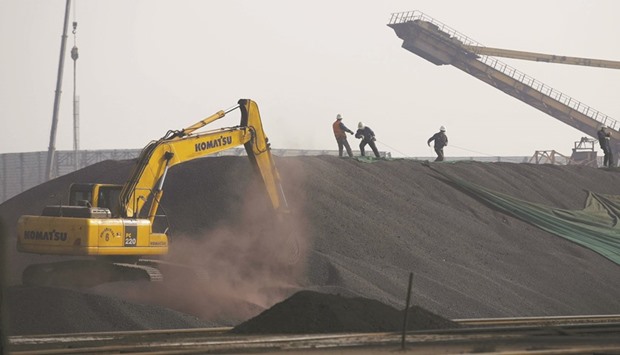Iron ore will defy the threat of a collapse in prices as China’s steel production holds steady to support demand in the top consumer, according to the world’s fourth-largest exporter.
“There’s no real reason that I can see that would cause any change in demand,” Fortescue Metals Group chief executive officer Nev Power said on Thursday in an interview. “We don’t see major changes in the price trend, although we do expect to see the volatility continue.”
Benchmark iron ore has surged more than a third in 2016, to snap three years of declines, after China added stimulus to counter slower growth, boosting steel production as the property sector recovered. Some banks are calling time on the revival, with UBS Group warning a “death knell” for this year’s rally may arrive next month, while Citigroup forecasts prices will drop to $45 a metric tonne next year and $38 a tonne in 2018 on burgeoning supply.
The arrival of additional low-cost tonnes from new iron ore mines and the likelihood that China’s elevated construction activity won’t persist will pose challenges to prices, Australia’s Department of Industry, Innovation and Science said in a report this month.
The department forecasts prices will tumble to average $44.80 a tonne in 2017. The construction industry accounts for more than 70% of China’s domestic steel use, it said.
“Despite a lot of comment to the contrary, the iron ore price has actually been trading pretty consistently for the last two years, it has not been in an upward or downward trend,” Power said, adding that prices are likely to remain in a range between $40 and $60 a tonne in 2017. “The underlying supply and demand balance is consistent.” Prices will probably average $55 a tonne this quarter and through the first half of 2017, before rising to $58 a tonne in the second six months, according to Toronto-Dominion Bank, the top forecaster in a Bloomberg ranking.
“We don’t see any evidence that a collapse is imminent,” Bart Melek, the bank’s head of commodity strategy, said last week. Ore with 62% content delivered to Qingdao closed at $58.37 a tonne on Wednesday, according to Metal Bulletin data. It’s gained 34% this year.
Chinese steel exports are sustainable at a rate of around 100mn tonnes a year and the nation - which accounts for about half of global steel output - will likely maintain annual production of about 800mn tonnes, Power said.
Crude steel output in China in the first nine months is higher than the same period a year ago, data published on Wednesday showed, while the country’s economic growth remained stable in the third quarter.
“We see more upside potential than downside potential,” RBC Capital Markets analysts including Fraser Phillips wrote in an October 16 note, forecasting prices may average $58.75 a tonne in 2017. Tighter supply and continued demand means there’s a more constructive outlook for iron ore, with the market to move into effective balance in 2018 to 2019, they said.
Iron ore supply will grow more quickly than demand in the near term, BHP Billiton cautioned on Wednesday.
The world’s biggest miner sees oil and gas markers better placed for gains than metals or mined commodities, and said this month iron ore has the worst outlook among the key materials it produces.
Fortescue’s shipments in the three months to Sept. 30 rose 5%, beating estimates, as competitors posted declines. Rio Tinto Group, the No 2 shipper, said sales slipped 5% in the same period as it carried out port and rail maintenance, and cut its forecast for full-year exports. BHP said on Wednesday output fell 6% in the quarter.

Labourers work on a pile of iron ore at a steel factory in China. Benchmark iron ore has surged more than a third in 2016, to snap three years of declines, after China added stimulus to counter slower growth, boosting steel production as the property sector recovered.

